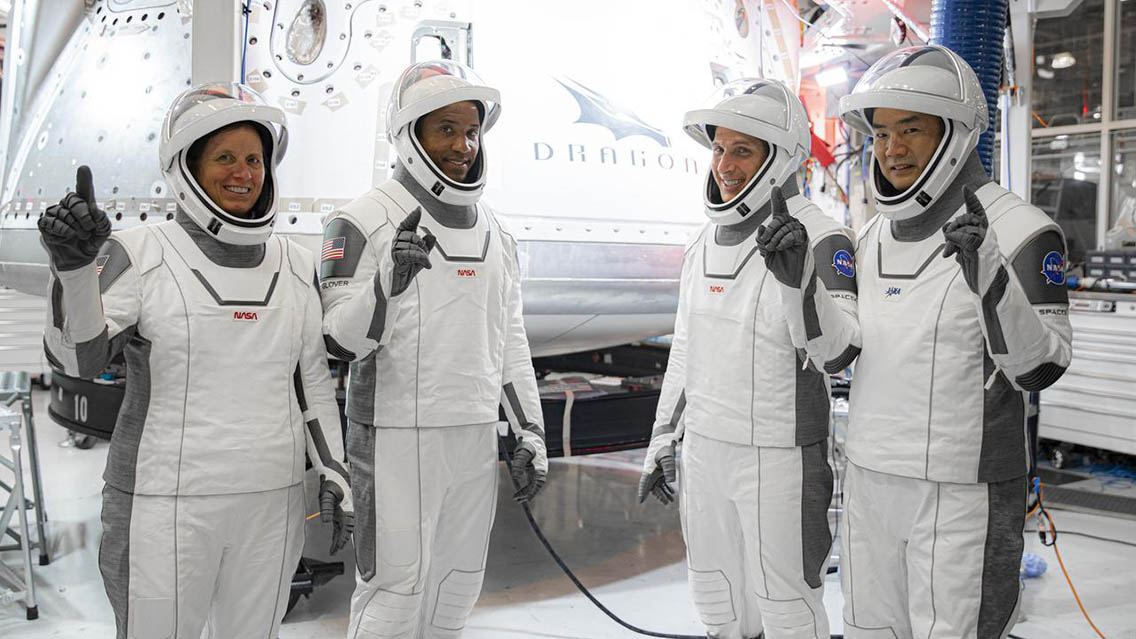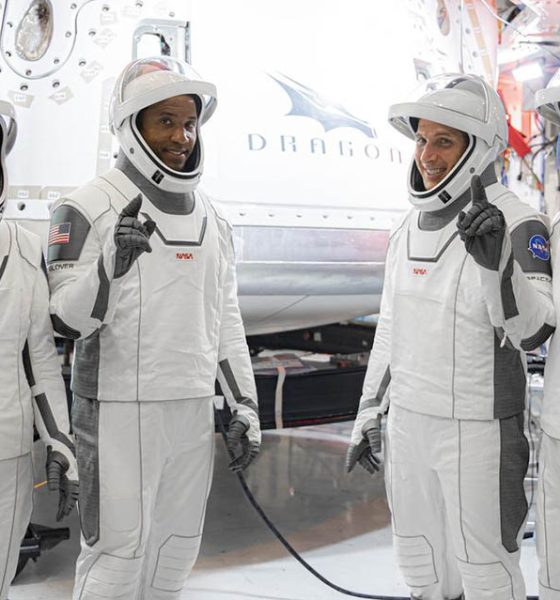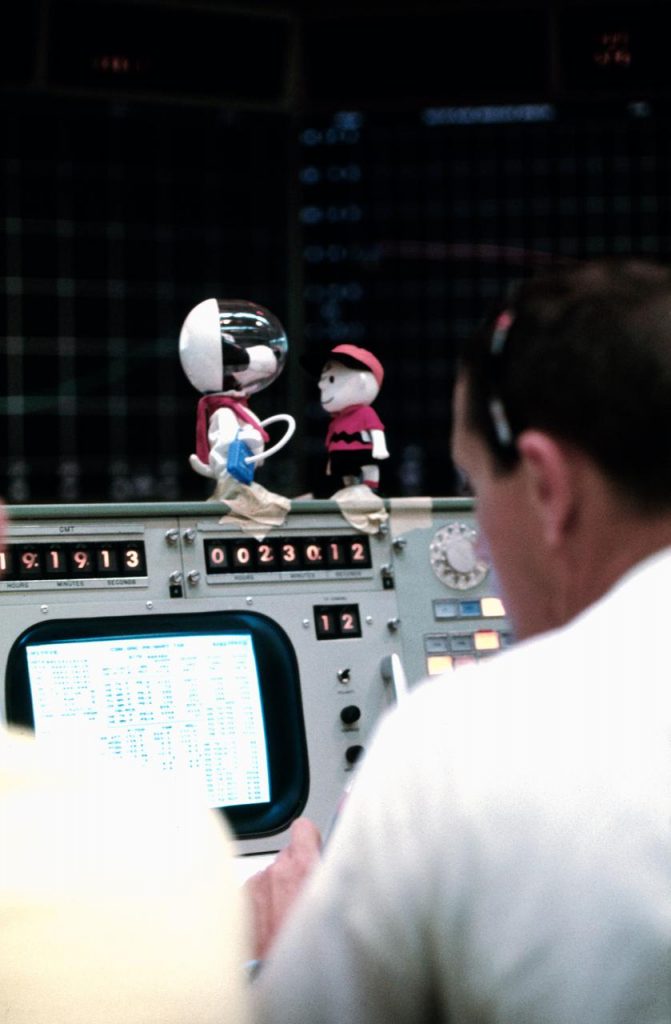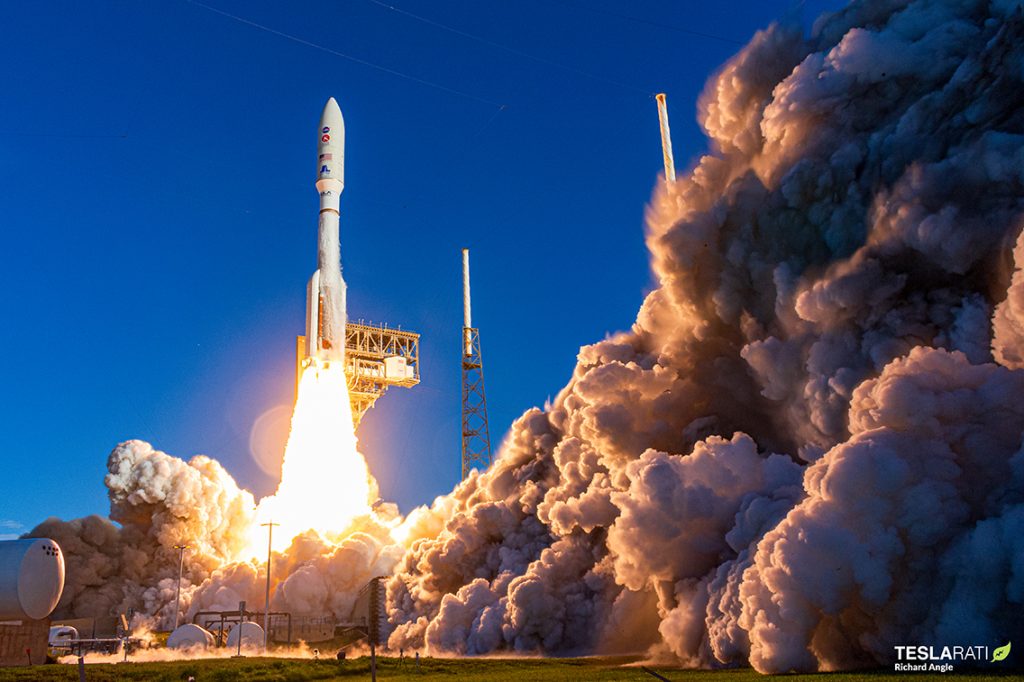

News
SpaceX Crew Dragon capsule christened ahead of operational astronaut launch debut
The long-standing tradition of astronauts naming the spacecraft that transports them safely to and from space continues ahead of SpaceX’s next crewed flight to the International Space Station (ISS).
Shortly after safely arriving in low Earth orbit during SpaceX’s Crew Dragon Demo-2 mission to the ISS under NASA’s Commercial Crew Program, NASA astronauts Bob Behnken and Doug Hurley revealed “Endeavour” to be the chosen name of their SpaceX Crew Dragon capsule. Prior to being named by its crew, the capsule had only been referred to by its internal build number, C206. The next Crew Dragon Capsule to visit the ISS, the Crew-1 mission C207 capsule, has been given the same treatment. Until now.
On Tuesday, September 29, during a full day of Crew-1 pre-mission media briefings, NASA astronaut and Commander of the Crew-1 mission, Mike Hopkins, revealed that “the Crew-1 Dragon capsule number 207 will henceforth be known by the call sign: Resilience.”
Hopkins explained that “I think all of us can agree that 2020 has been a challenging year; global pandemic, economic hardship, civil unrest, isolation. The name Resilience is really an honor of the SpaceX and the NASA teams.” He went on further to explain that the name was also chosen as a nod to all of those that have endured the difficulties, but continued to support the mission, “our families, our colleagues, our fellow citizens, our international partners, our leaders that have all showed those same characteristics through these difficult times.”
What’s in a name?
The naming of crewed spacecraft is a tradition that extends all the way back to NASA’s Mercury program. Alan Shepard, the first American in space in 1961, designated his spacecraft “Freedom 7” before its debut flight.
More notable names arose during NASA’s Apollo era of lunar exploration. With two spacecraft required for the missions to the Moon – a command module and a lunar lander – monikers were needed to distinguish between the two vehicles during radio communication. “Charlie Brown” and “Snoopy” were chosen for the spacecraft of the Apollo 10 mission. The characters of Charles Schultz’s “Peanuts” have since become synonymous with NASA.

In observance of the 50th anniversary of Apollo 10, an inflatable Snoopy balloon dressed in an orange astronaut suit premiered during the 2019 Macy’s Thanksgiving Day Parade in New York. It was a reoccurrence of the astronaut Snoopy balloon that originally debuted in 1969 celebrating Neil Armstrong and Buzz Aldrin’s famous walk on the Moon during NASA’s Apollo 11 mission.
New era of spaceflight, same traditions
Hurley and Behnken designated “Endeavour” for their dragonship as a way of honoring those before them. Both Behnken and Hurley both flew to the ISS for the first time as NASA astronauts on NASA’s space shuttle Endeavour.
After the tragic loss NASA’s space shuttle “Challenger” in 1986, NASA returned to flight with the newly christened space shuttle “Endeavour” in 1992. The name was chosen to fit in-family with the other space shuttle names designated after famous historical ships that set sail to explore the great unknown. Endeavour was named after a British Royal Navy research vessel designated for the lands of Australia and New Zealand in 1768.
The command module of Apollo 15 also shares the name. Commander David Scott once explained that the named “Endeavour” was chosen to recognize the heavy scientific emphasis of the Apollo 15 mission mirroring that of the British Royal Navy research vessel of the same name.
It seemed only fitting that the first crewed vehicle to return humans to the ISS from American soil after an absence of nine years receive the honorary name “Endeavour” as well.
Although the tradition of naming the spacecraft remains, the inspiration for those names has shifted. Dragonship “Resilience” is not the only spacecraft to launch from Earth in 2020 with a name defined by a characteristic. NASA’s Perseverance Mars rover launched earlier this year on its way to the Red Planet.

The name option of Perseverance was submitted, along with 28,000 other essay submissions, to be voted on by the general population. Perseverance was chosen by seventh-grader Alexander Mather. He believed the name fit in-family with the other Mars rovers currently occupying the Red Planet and that it was one of the most important characteristics missing from the line up of other inspirational names such as Sojourner, Spirit, Opportunity, and InSight.
When Mather submitted the name, he believed it to represent a quality possessed by humans. Throughout the year 2020, the definition of the name evolved to represent the wilfulness of human nature to endure and overcome the tumultuous year of 2020. As Mather explained “we, not as a nation, but as humans will not give up. The human race will always persevere into the future.”

Dragonship “Resilience” is sure to inspire just as many as its many predecessors. “Resilience” will be the very first spacecraft to complete an operational crewed mission to the ISS for NASA’s Commerical Crew Program. It will carry NASA astronauts Mike Hopkins, Victor Glover, and Shannon Walker along with Japan Aerospace Exploration astronaut Sôichi Noguchi to the ISS. Barring any further delays, the Crew-1 “Resilience” Dragon capsule is slated to blast off atop of a SpaceX Falcon 9 at 2:40 am (0640 UTC) from LC-39A at Kennedy Space Center, FL on October 31, 2020.
Check out Teslarati’s Marketplace! We offer Tesla accessories, including for the Tesla Cybertruck and Tesla Model 3.

Elon Musk
Tesla’s Elon Musk: 10 billion miles needed for safe Unsupervised FSD
As per the CEO, roughly 10 billion miles of training data are required due to reality’s “super long tail of complexity.”

Tesla CEO Elon Musk has provided an updated estimate for the training data needed to achieve truly safe unsupervised Full Self-Driving (FSD).
As per the CEO, roughly 10 billion miles of training data are required due to reality’s “super long tail of complexity.”
10 billion miles of training data
Musk comment came as a reply to Apple and Rivian alum Paul Beisel, who posted an analysis on X about the gap between tech demonstrations and real-world products. In his post, Beisel highlighted Tesla’s data-driven lead in autonomy, and he also argued that it would not be easy for rivals to become a legitimate competitor to FSD quickly.
“The notion that someone can ‘catch up’ to this problem primarily through simulation and limited on-road exposure strikes me as deeply naive. This is not a demo problem. It is a scale, data, and iteration problem— and Tesla is already far, far down that road while others are just getting started,” Beisel wrote.
Musk responded to Beisel’s post, stating that “Roughly 10 billion miles of training data is needed to achieve safe unsupervised self-driving. Reality has a super long tail of complexity.” This is quite interesting considering that in his Master Plan Part Deux, Elon Musk estimated that worldwide regulatory approval for autonomous driving would require around 6 billion miles.
FSD’s total training miles
As 2025 came to a close, Tesla community members observed that FSD was already nearing 7 billion miles driven, with over 2.5 billion miles being from inner city roads. The 7-billion-mile mark was passed just a few days later. This suggests that Tesla is likely the company today with the most training data for its autonomous driving program.
The difficulties of achieving autonomy were referenced by Elon Musk recently, when he commented on Nvidia’s Alpamayo program. As per Musk, “they will find that it’s easy to get to 99% and then super hard to solve the long tail of the distribution.” These sentiments were echoed by Tesla VP for AI software Ashok Elluswamy, who also noted on X that “the long tail is sooo long, that most people can’t grasp it.”
News
Tesla earns top honors at MotorTrend’s SDV Innovator Awards
MotorTrend’s SDV Awards were presented during CES 2026 in Las Vegas.

Tesla emerged as one of the most recognized automakers at MotorTrend’s 2026 Software-Defined Vehicle (SDV) Innovator Awards.
As could be seen in a press release from the publication, two key Tesla employees were honored for their work on AI, autonomy, and vehicle software. MotorTrend’s SDV Awards were presented during CES 2026 in Las Vegas.
Tesla leaders and engineers recognized
The fourth annual SDV Innovator Awards celebrate pioneers and experts who are pushing the automotive industry deeper into software-driven development. Among the most notable honorees for this year was Ashok Elluswamy, Tesla’s Vice President of AI Software, who received a Pioneer Award for his role in advancing artificial intelligence and autonomy across the company’s vehicle lineup.
Tesla also secured recognition in the Expert category, with Lawson Fulton, a staff Autopilot machine learning engineer, honored for his contributions to Tesla’s driver-assistance and autonomous systems.
Tesla’s software-first strategy
While automakers like General Motors, Ford, and Rivian also received recognition, Tesla’s multiple awards stood out given the company’s outsized role in popularizing software-defined vehicles over the past decade. From frequent OTA updates to its data-driven approach to autonomy, Tesla has consistently treated vehicles as evolving software platforms rather than static products.
This has made Tesla’s vehicles very unique in their respective sectors, as they are arguably the only cars that objectively get better over time. This is especially true for vehicles that are loaded with the company’s Full Self-Driving system, which are getting progressively more intelligent and autonomous over time. The majority of Tesla’s updates to its vehicles are free as well, which is very much appreciated by customers worldwide.
Elon Musk
Judge clears path for Elon Musk’s OpenAI lawsuit to go before a jury
The decision maintains Musk’s claims that OpenAI’s shift toward a for-profit structure violated early assurances made to him as a co-founder.

A U.S. judge has ruled that Elon Musk’s lawsuit accusing OpenAI of abandoning its founding nonprofit mission can proceed to a jury trial.
The decision maintains Musk’s claims that OpenAI’s shift toward a for-profit structure violated early assurances made to him as a co-founder. These claims are directly opposed by OpenAI.
Judge says disputed facts warrant a trial
At a hearing in Oakland, U.S. District Judge Yvonne Gonzalez Rogers stated that there was “plenty of evidence” suggesting that OpenAI leaders had promised that the organization’s original nonprofit structure would be maintained. She ruled that those disputed facts should be evaluated by a jury at a trial in March rather than decided by the court at this stage, as noted in a Reuters report.
Musk helped co-found OpenAI in 2015 but left the organization in 2018. In his lawsuit, he argued that he contributed roughly $38 million, or about 60% of OpenAI’s early funding, based on assurances that the company would remain a nonprofit dedicated to the public benefit. He is seeking unspecified monetary damages tied to what he describes as “ill-gotten gains.”
OpenAI, however, has repeatedly rejected Musk’s allegations. The company has stated that Musk’s claims were baseless and part of a pattern of harassment.
Rivalries and Microsoft ties
The case unfolds against the backdrop of intensifying competition in generative artificial intelligence. Musk now runs xAI, whose Grok chatbot competes directly with OpenAI’s flagship ChatGPT. OpenAI has argued that Musk is a frustrated commercial rival who is simply attempting to slow down a market leader.
The lawsuit also names Microsoft as a defendant, citing its multibillion-dollar partnerships with OpenAI. Microsoft has urged the court to dismiss the claims against it, arguing there is no evidence it aided or abetted any alleged misconduct. Lawyers for OpenAI have also pushed for the case to be thrown out, claiming that Musk failed to show sufficient factual basis for claims such as fraud and breach of contract.
Judge Gonzalez Rogers, however, declined to end the case at this stage, noting that a jury would also need to consider whether Musk filed the lawsuit within the applicable statute of limitations. Still, the dispute between Elon Musk and OpenAI is now headed for a high-profile jury trial in the coming months.








